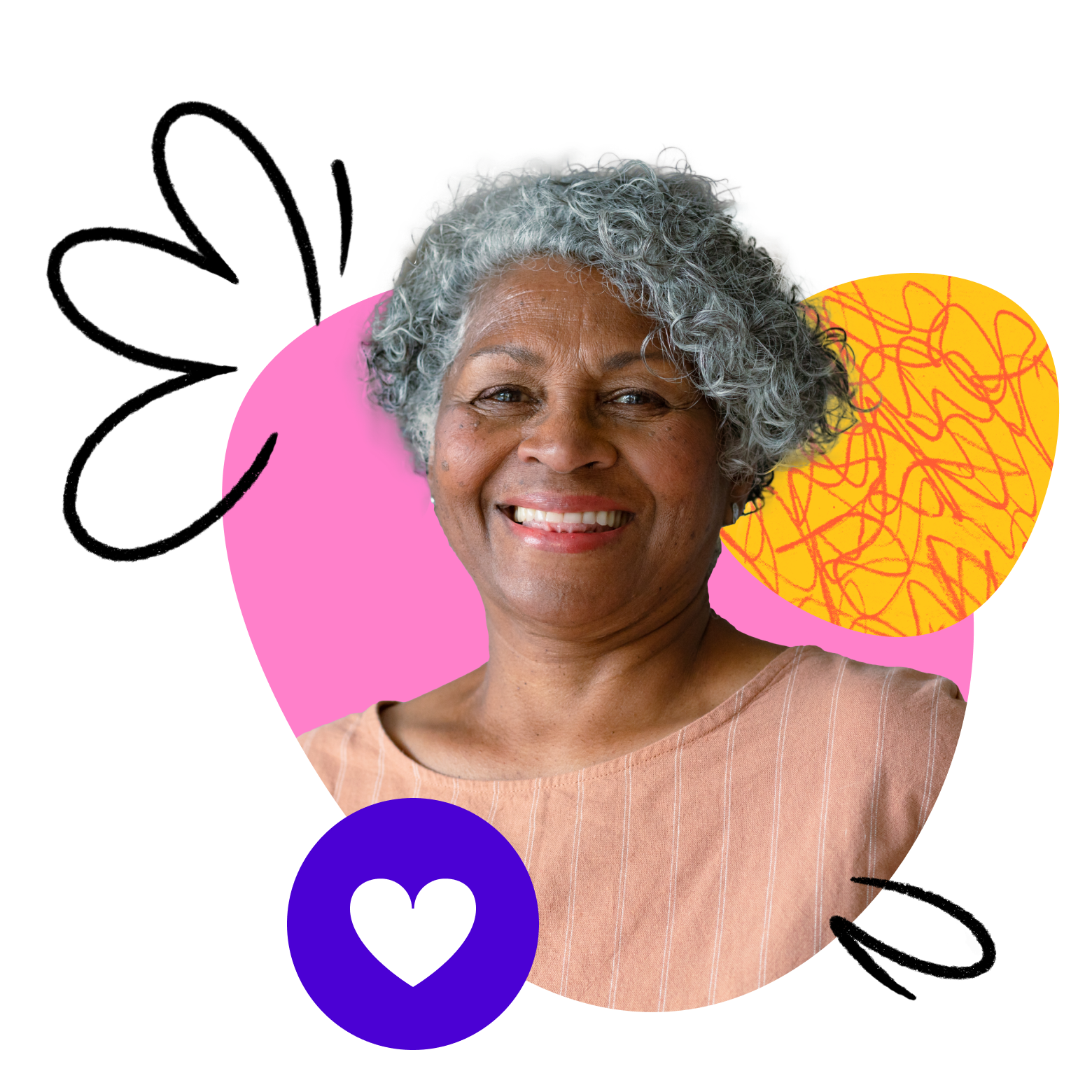Thea Wayne is a self-described “serial entrepreneur.” She launched her first business from her kitchen when she was 23 and loves helping people bring their vision for their businesses to life. In an Outschool Teacher Appreciation Week live presentation, Thea shared best practices for gaining followers and promoting your classes on social media, with a specific focus on TikTok and Instagram
Thea says if you’re going to focus on one social media channel in 2022, consider TikTok as a top contender. TikTok is the fastest growing social media platform of all time, and it’s the authenticity of its creators’ content that really sets it apart. This positive and unfiltered approach to content production has made the app a haven for not only Gen Z but every generation (check out the story of Jones Road’s success with the over-50 audience for proof). That means your teaching business’s target audience is ready and waiting to watch your videos!
3 steps to social media success
1. Find your niche
2. Grow your audience
3. Convert followers to sales
Social media marketing offers something that’s difficult to find anywhere else: free opportunities to experiment with content, to find that niche, and to connect with your target audience to build your brand. No matter which channel you’re using to promote your business, the path to success follows the same pattern.
One of the biggest hurdles many entrepreneurs face is overcoming resistance to being on camera and promoting their personality on social media. As an educator, you may be wondering:
- Do I need to record videos of myself for social media?
- What if I look like a “sell out”?
- I don’t want to be an influencer — I just want to teach. Do I have to do both to be successful?
First things first: Being an “influencer” can be a full-time job in itself, and you do not have to set out to be one. Your goal as an educator on Outschool is most likely to promote your classes and direct followers to your website or Outschool profile. You can do that on social media without being an “influencer” – but realistically, not without showing your face and a bit of your personality!
Thea recommends remembering that you are your brand (especially if you teach solo on Outschool), and therefore it’s essential for you to show up in your content. If you’re nervous about putting yourself out there, don’t forget: Your social content should feature you at your best, teaching what you love to captivated followers. You’re already a professional!
However, it’s never okay to share recordings of Outschool classes or personal information about your learners on social media (including recordings of learners’ voices). Before publishing content on TikTok, make sure you review our policy on protecting learner privacy.
What makes a good TikTok video
Be authentic
Unlike some other social media platforms, successful TikTok accounts rarely rely on perfectly poised, highly edited content to bring in followers. Instead, TikTok users embrace content that feels authentic. As Thea puts it, it’s often more about the person behind the video than the product they’re selling. Some creators simply hold their phone in front of their face and talk, while others add text or animations to illustrate what they’re saying and stop users from scrolling by. Adding text or captions is also a great way to increase the accessibility of your content. Whatever your style, Tiktok users are interested in content that feels “real.”
Educate and engage
The TikTok format lends itself perfectly to informative, short videos that teach or entertain — something online educators are already excellent at! A great TikTok video is designed to help your audience get to know you and understand your expertise. Thea says she never shies away from giving away free information because that’s how you build trust with your followers and create a relationship that leads to a purchase.
Follow trends, but don’t go crazy
TikTok trends come and go on a daily basis, and hopping onto a trend can sometimes lead to a viral video. Common trends involve using a specific song or sound bite, recording a reaction video or duet, and replicating a certain scene with your own spin.
Viral videos are helpful for building your brand only if they align with your channel’s theme and you can follow them up with related content that will keep your new followers engaged. Otherwise, one hit video that’s completed unrelated to your usual content can actually hurt your overall performance and limit your reach with your target audience. So be choosy about which trends fit with your usual content and which you should just let go by.
Starting out strong
First, create a business TikTok account. Thea says you want to start with a blank slate, then follow these three steps to posting your first batch of content:
1. Save videos on your theme
Before uploading any content yourself, spend 10-15 minutes a day for one week just scrolling and saving content. Save any videos you like that are related to your teaching business. For example, if you teach about English and poetry on Outschool, look for videos that include educators, poetry, English, teaching, school, online classes, etc.
Saving these videos accomplishes two things: You tell the TikTok algorithm what content you’ll be engaging with on the platform, and you start to find inspiration for your own videos. Replicating what other creators are doing is common practice on TikTok, so pay attention to videos you find engaging and think about how you could do something similar!
2. Find your niche
Because TikTok’s algorithm allows it to identify very specific likes and dislikes of its users, successful creators hone in on a truly distinct niche for their videos. Combine your teaching specialties with your research from step one to define which little corner of TikTok you want to occupy. Don’t forget to consider your target audience as well.
Let’s say you’re the English and poetry educator we mentioned in step one. Maybe you choose to try out one of the following niches:
- Breaking down simple poem structures with examples
- Reading short poems accompanied by matching video scenes
- Tips for teaching poetry to ages 5-10
What you really want to avoid here is jumping all over the place with loosely related videos (a common mistake made by folks new to TikTok). If you publish one video on writing a haiku, then another video on teaching on Zoom, then a third video on being a homeschool parent — TikTok may not understand what type of content you’re making and won’t serve up your videos to the right audience. While all of those topics are related to education, the TikTok algorithm looks for more specific themes that tie your content together.
3. Write down at least 30 video ideas
That’s right — at least 30! When you start posting content on your account, you should be ready to publish one to three videos per day. This may seem like a lot, but remember that most TikTok videos are between 15-60 seconds. Because they’re so short, Thea recommends recording a batch of videos all at once that you can release over the course of a week or month.
One viral video will likely not lead to big sales for your teaching business; continued engagement that builds trust is key to sparking those enrollments from followers. Set yourself up to maximize the success of any video with plenty of content that keeps people coming back to your profile.
Make engaging content
While high-performing TikTok content isn’t necessarily super polished, you should still put your best foot forward when it comes to basics like video lighting, camera angles, and backgrounds.
Additionally, Thea says you want to focus on videos in the 15-second range when you’re just starting out, then move into making some longer videos once you have a following. Each video should grab scrollers’ attention in the first three seconds, or else users may just swipe up past your content. Don’t get caught up in long intros; talk fast and tell your audience exactly who you are and what they’ll see or learn from you right away! Adding text or captions can also increase the accessibility of your videos for users who prefer captioned viewing.
And don’t forget that your goal is to convert followers to sales. To make sure followers can easily find your Outschool classes or business website, place those links prominently in your TikTok profile, and quickly include a shoutout to your teaching business in your videos. Just remember, educators are not permitted to share links to their social media profiles with learners or parents via the Outschool platform.
Finally, don’t be discouraged if you aren’t getting a ton of views right away. It takes time for TikTok to learn what kind of content you’re posting and start including it in the algorithm. Stick with it, keep a long list of video ideas handy, and consistently publish content in your niche if you want to see results.
To keep building your skills as an educator entrepreneur, learn more about using social media to promote Outschool classes or other marketing channels used by online educators.

